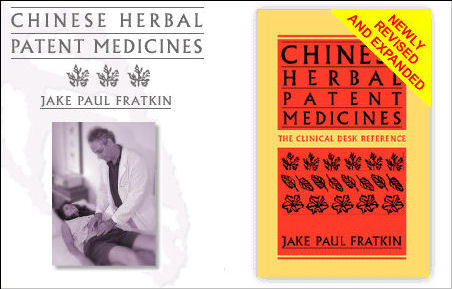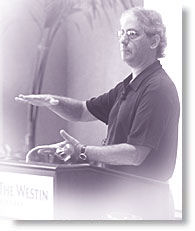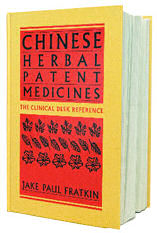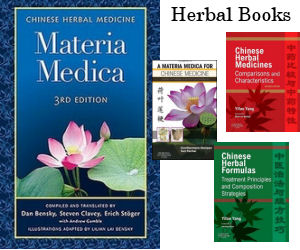 |
|
|
Pattern selection is based primarily on six position pulse, and confirmed by palpating the abdomen and correlating the symptom picture. (Abdomen and symptom conformations are detailed in the books of Shudo/Brown, and Fukushima). Personally, I do not use abdominal or symptom conformations very often, tending to rely almost exclusively on pulse. This may be due to my inexperience, lack of thoroughness, or time constraints. However, when my diagnosis is accurate, I expect the pulse to change immediately with needle insertion and manipulation. This is my confirmation. 2) Pulse diagnosis of the pattern. Upon palpation of the radial artery, we should delineate the superficial and deeper borders of the blood vessel. The yin aspect of the position is felt by feeling the lower border of the vessel, and going down a little deeper. This correlates to its associated yin channel. Likewise, the yang aspect of the position is felt by feeling the upper border of the vessel, and coming off the artery a little. This correlates to its associated yang channel. Pulse Diagnosis Books I recommend that each position of each hand (proximal, middle, distal) be felt alone with one finger, going back and forth between the superficial yang aspect and the deeper yin aspect. We are looking for differences of strength: the yang and yin aspects should be equal, and we prioritize by looking for the weaker yin positions. If we find a particular weak yin position, we should seek out the partner channel of the pattern, which should also be weak. This will determine which pattern is showing. It is more valuable, I believe, to compare yang and yin aspects of each position, rather than compare relative weaknesses of all the yin pulses, or to compare right side and left side positions. (Shudo and Fukushima, on the other hand, encourage comparison of right and left sided positions.) Once you have determined the two primary channels, I suggest going to the next step, namely selecting and treating the points to tonify the two deficient meridians. Don´t worry about the third channel of the pattern until after needles have been placed in the primary channels. The reason for this is that often, with evaluation, the third channel will not need to be treated. Pulse diagnosis is used not only to determine deficiencies and excesses, but, as importantly, to confirm correct point selection and effective needle treatment. The pulse should significantly and immediately change with correct treatment. 3) Point selection. Both Shudo and Fukushima recommend a basic protocol for doing root treatment, based on the 69th chapter of the Nan Jing. “In a case of deficiency, fill the respective meridian´s mother. In a case of excess, drain the respective meridian´s child. One must first fill, and drain afterwards.’. Mother and child can be performed in one of two ways: the mother or child point on the affected meridian, or the mother or child meridian itself. For example, if Lung meridian is weak, the Nan Jing instructs us to tonify the mother. The mother of Lung (metal) is earth. The earth point on the Lung meridian is LU 9. The earth meridian is Spleen. One chooses the horary point of the Spleen (earth of the earth), namely SP 3. Both Shudo and Fukushima advise us to tonify both Lu 9 and SP 3 to affect an adequate tonification of the primary deficient meridian. In cases of excess, one would choose the child point. If, for example, Liver meridian (wood) is excess, one would sedate the child, namely the fire point. The fire point of the Liver is LV 2; the horary point of the if the child meridian, namely Pericardium, would be the fire point, or PC 8. In modern clinical practice of Meridian Therapy, certain classical five phase points are never used, because they are too uncomfortable for the patient. Instead, alternative points are recommended. Ogawa Sensei, in fact, remarked that one can use any point, as long as it is on the appropriate mother or child meridian. Below, in chart format, are the various recommendations for point selection based on deficiency and excess of each channel. (Note that the Japanese recommend treating the Pericardium channel when imbalances are felt on the Heart meridian.) The classical approach uses two acupuncture points for tonification, and two acupuncture points for draining. Shudo and Fukushima use two points to tonify, and one point to drain. Ogawa only tonifies in his five phase Meridian Therapy, with one point. My selections suggests various points from which the practitioner chooses. This is experience of which points might effectively balance the pulse.
Point selection and location are critical to success. Point selection means choosing the best point on an affected meridian for therapy. This is determined by feeling the radial pulse of the appropriate channel, and simultaneously touching different acupuncture points on that channel. There should be a subtle but noticeable improvement on the pulse. You can use a taishin, or one´s finger. A second way is to feel the various points, and using your energetic sense in choosing the best point. Ogawa Sensei uses this method, in conjunction with visual inspection. I have also devised a way of muscle testing myself in order to determine deficiencies and excesses on a point, in order to best select a point for treatment. In a future article I would like to share this marvelous technique. Point location is also critical. Anatomical location of the point is merely the starting point for a scan of the exact nearby location of the actual point. The Toyo Hari school calls this “the presently alive point’. One needs to train the finger to sense energetic imbalances so as to determine the precise location. This can also be verified by the pulse. Treatment on the wrong location is usually ineffective, and pretty much a waste of the patient´s time. 4) The protocol for the root treatment. In the 69th chapter of the Nan Jing, it says, “One must first fill, and drain afterwards.’. This important instruction has two implications. The first is that treating deficiencies has the priority over treating excesses. The second follows from the first. As we treat the primary or secondary deficiency, it often becomes unnecessary to treat the excess on the third meridian. For example, in a Lung-Spleen pattern, we may diagnose deficiencies on both the Lung and Spleen channels, and an excess on the Liver channel. But after treating the Lung and Spleen, the Liver channel may be normalized, without requiring further treatment. A basic protocol would be as follows. First, evaluate on the radial pulse the two primary deficient meridians needing to be balanced. Then, determine which point on each meridian will balance that meridian on the pulse. Next, treat those two points. Usually the right side is treated for deficiencies on women, and the left side for men. Now, go back to feel the pulse: are the two meridians sufficiently tonified? If not, it may be necessary to treat on the other side, and if so, the same procedure for determining the correct point is repeated. Afterwards, evaluate the pulses for the third yin meridian in the pattern, and determine if it is excess or deficient. Again, find and treat the appropriate point. Usually the excess is treated on the opposite side of the primary deficiencies: left for women and right for men. The last step in the root treatment is to evaluate all the yang channels for excess or deficiency. Normally, if there is an imbalance on the yang channels, it will be an excess. Determine which point to use, by pulse confirmation, and treat it. Clinically speaking, I rarely find a yang imbalance, except in cases of musculoskeletal pain. A list of the yang meridian treatment points is as follows:
5) Needle technique. The needle technique of Japanese Meridian Therapy is unique, distinguishing itself from other schools of acupuncture, particularly TCM. In Chinese acupuncture, the needle is placed below the layer of fat, to the level of the channel. This can be 15 mm to 40 mm deep. Needles are thick, with strong manual stimulation to affect the qi of the channel. In China, if the patient does not feel the needle sensation, the treatment is considered ineffective. Japanese technique is radically different. If the patient feels the needle, the practitioner did not do a good job. Pain, according to Fukushima, causes a draining effect, regardless of the point chosen. The Japanese use thin needles, applied with very subtle stimulation. For distal points below the elbow and knee, needle insertion is 2 mm or less. (A needle in a plastic pipette comes with 4 mm of needle handle showing, so 2 mm is only halfway from the top of the handle to the top of the plastic pipette.) It is believed that influencing the energy of the channel at these points is best done just below the skin, where it is most ethereal. Needle technique requires application of qi (ki) to the needle. This can be performed in several ways. Miki Shima advises pointing one´s thumb and index finger towards the acupuncture point, in line with the needle shaft, and extending one´s qi down the needle, into the point, and completely along the course of the channel. The farther up you can visualize the extension the qi, the better. When tonifying, I always try to extend the qi to the most distal point of that channel. For leg yin channels, I visualize to Baihui, GV 20. In the Toyo Hari school, it is recommended to squeeze forcibly the thumb and index fingers of both hands so as to create energy which will be taken up by the needle into the point. In both cases, it is important to use the mind to focus and extend the qi into and along the channel. 6) Reinforcing the root treatment. If there are no secondary complaints, one can reinforce the root treatment by treating the Bladder shu points associated with the two primary deficient channels. For example, in a Lung pattern, one would treat BL 13 and BL 20, the shu points for the Lung and Spleen. This treatment can be done with needles, moxa-needles, direct moxa, or intradermal needles. I have also found that micro-stim with 8-9 Hz is very effective. 2. THE NON-PATTERN ROOT TREATMENT Ogawa recommends what he calls “the non-pattern root treatment’. This involves evaluating a certain group of points for one of three aberrant qualities: depression with a sense of energetic deficiency; induration or hardening (kori); or tenderness as reported by the patient (a shi). Points are evaluated quickly, depending on the clinical experience of the practitioner, by lightly running one´s fingers over areas of the body, stopping to feel or press suspected points. The practitioner chooses between three and fifteen points to treat, using retained needle, non-retained needle with manipulation, or moxa. Choose from: Torso: CV 4, CV 6, CV 12, ST 25. 3. BRANCH TREATMENT. Traditional Chinese medicine (TCM) uses recommended acupuncture prescriptions based on the patient´s complaint. These include three point treatment (local, distal, remote), or acupuncture prescriptions based on zang-fu differentiation. Japanese treatment of disease includes various approaches and techniques, including those of Nagano, Serizawa, and Kiiko Matsumoto; or the moxibustion techniques of Sawada and others, as taught by Junji Mizutani. Eight extraordinary channel therapy, especially the therapeutic work promoted by Manaka, Birch, and Matsumoto. Auriculotherapy, the work of Nogier and Oelson, is an excellent branch treatment. Shima´s somato-auricular therapy (SAT) combines auricular points with eight extraordinary channel or divergent channel therapy. Trigger point therapy is a common treatment in medical acupuncture, performed with needles, electro-stim, or injection of homeopathic or allopathic medicines. Requena´s treatment of disease by constitutional type is an excellent modality not yet fully explored in North American, with a strong following in France and southern Europe. Korean hand acupuncture also offers a valuable branch treatment for symptom control. Branch treatment is important for clinical success, when specific complaints exist. In these cases, it is not enough to do meridian balancing alone. However, when one combines root and branch, clinical efficacy is twice as fast in terms of number of treatments required. In a modern practice such as Shudo or Ogawa, the meridians are assessed and treated as the first part of a treatment, even if it involves only two needles. The practitioner continues with non-pattern root treatment, followed by local branch treatment. This becomes an integrated root-branch therapy, by which successful treatment is insured. Jake Paul Fratkin, OMD, L.Ac. Following undergraduate degrees in Chinese language and philosophy at the University of Wisconsin, Dr. Fratkin trained in Korean and Japanese acupuncture starting in 1975, with advanced herbal training in Beijing. Dr. Fratkin has been teaching at various acupuncture colleges since 1982 and was Department Chairman of Herbal Medicine, Southwest Acupuncture College, Santa Fe. He is in private practice in Boulder, Colorado, where he combines Chinese herbal medicine, Japanese Meridian Therapy, and nutritional medicine. RECOMMENDED READING Chasing the Dragon's Tail Clinical Acupuncture: A Practical Japanese Approach Hara Diagnosis: Reflections on the Sea Japanese Classical Acupuncture: Introduction to Meridian Therapy Japanese Acupuncture: A Clinical Guide Meridian therapy  |


